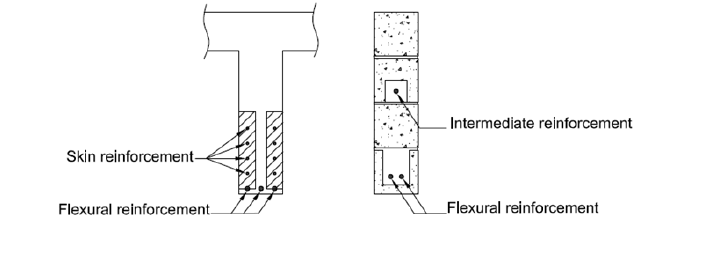1 Department of Civil and Environmental Engineering, University of Windsor, Windsor, ON, N9B 3P4, Canada.
2 Director, Canada Masonry Design Centre, Mississauga, ON, L5T 2N7, Canada. dstubbs@canadamasonrycentre.com
ABSTRACT
Concrete masonry components crack when they are subjected to flexural loading and these cracks can lead to serviceability problems. Large masonry flexural beams are those with a height of 600 mm or larger. Currently, it is anticipated that these cracks in large masonry flexural beams can extend upward and create a larger crack width in the zone which lies in between the primary flexural reinforcement and the neutral axis. This zone is referred to as the intermediate zone. Accordingly, current Canadian masonry design standard, CSA S304.1, recommends using one No. 15 bar at a spacing of 400 mm as intermediate reinforcement in beams up to 240 mm wide to minimize the intermediate crack width. However, it is presumed that this recommendation is not based on any test data since no studies on large masonry beams were found in the public domain. Hence, this study was undertaken to verify the current provision of CSA S304.1 about the requirement of intermediate reinforcement in large masonry beams. The study was completed using laboratory-based experimental method. It was found that the current provision of the Canadian standard needs revision. This paper discusses test specimens, test procedure, and test results obtained from this study.
KEYWORDS: large masonry beam, intermediate reinforcement, intermediate crack width, serviceability limit states
225.pdf



